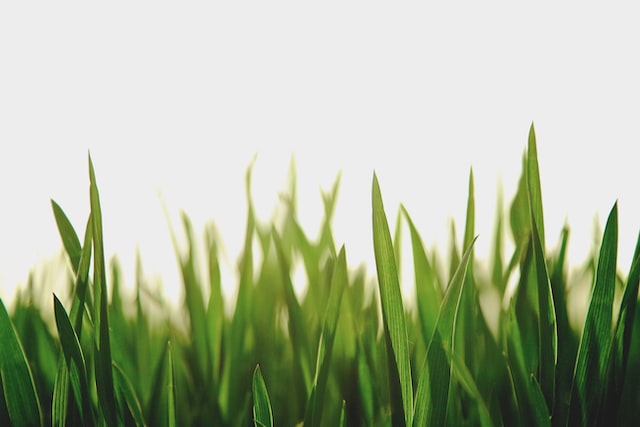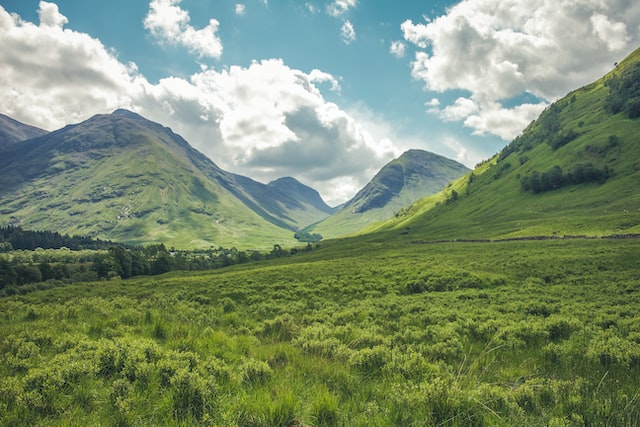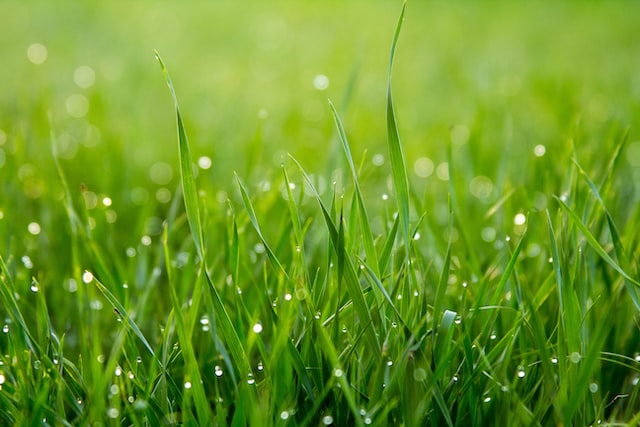Discover the Enchanting Delight of Grass Perfume Note
Grass: The Earth's Verdant Essence - From Perfumes to Fun Crazy Facts
Grass, the lush and versatile vegetation covering vast landscapes, is an essential part of the natural world with numerous applications. This verdant essence of the Earth holds a prominent place in various domains, including perfumes, fragrance, therapeutic oils, food, medicinal systems, history, and even fun crazy facts. In this article, we embark on a journey to explore the captivating allure of grass, uncovering its diverse uses and intriguing characteristics that have fascinated people for ages.
1. Grass in Perfumes and Fragrance
The fresh and invigorating scent of grass has inspired perfumers to incorporate its essence into fragrances. While grass extract itself is not commonly used in perfumery, some fragrances aim to capture the essence of freshly cut grass, evoking a sense of natural vitality and openness.
2. Grass in Therapeutic Oils
Grass is not commonly used as a primary source of therapeutic oils in aromatherapy. However, some grass varieties, such as lemongrass, are used to produce essential oils with potential therapeutic benefits. Lemongrass oil, for instance, is known for its refreshing and uplifting properties.
3. Grass in Culinary Delights
Certain grasses, such as wheatgrass and barley grass, are used in culinary creations. They are often juiced or used in powdered form as ingredients in health drinks, smoothies, and green juices due to their nutrient-rich content.
4. Grass in Medicinal Systems
Grass has a long history of use in traditional medicine for its potential health benefits. For example, lemongrass has been used in various cultures for its digestive and calming properties. However, it is essential to consult a qualified healthcare professional before using grass or grass-derived products for medicinal purposes.
5. Historical Significance of Grass
Grass has played a vital role in human history, serving as the primary food source for grazing animals and influencing the development of agriculture and settlements. The cultivation of grasses such as wheat and rice has been essential in shaping human civilizations.
6. Fun and Crazy Facts about Grass
a. Fastest Growing Plant: Bamboo, a type of grass, holds the title of being one of the fastest-growing plants on Earth, with some species growing up to 35 inches per day.
b. Grasslands: Grasslands cover about a quarter of the Earth's land area and provide habitats for a diverse range of plant and animal species.
c. Survival of the Fittest: Grasses have evolved to be resilient and adaptable, making them capable of surviving in various climates and conditions.
d. Grazing Animals and Grasslands: Grazing animals, such as cattle and bison, play a crucial role in maintaining the balance of grasslands by preventing the overgrowth of certain grass species.
e. Grass in Sports: Grass fields are commonly used in various sports, including soccer, football, and golf, due to their ability to provide a cushioning effect and reduce injuries.
Grass, with its verdant allure and diverse applications, stands as an essential part of the Earth's ecosystem and human life. From fragrances that capture the essence of open fields to historical significance and intriguing fun facts, grass continues to captivate and inspire. Whether appreciated for its role in agriculture and food production or celebrated for its contribution to sports fields and leisure spaces, grass represents the resilient and nurturing qualities of nature. As we celebrate grass's contributions to various aspects of human life, it stands as a testament to the enduring beauty and significance of the Earth's verdant essence and its impact on our well-being and the environment.
Grass, the lush and versatile vegetation covering vast landscapes, is an essential part of the natural world with numerous applications. This verdant essence of the Earth holds a prominent place in various domains, including perfumes, fragrance, therapeutic oils, food, medicinal systems, history, and even fun crazy facts. In this article, we embark on a journey to explore the captivating allure of grass, uncovering its diverse uses and intriguing characteristics that have fascinated people for ages.
1. Grass in Perfumes and Fragrance
The fresh and invigorating scent of grass has inspired perfumers to incorporate its essence into fragrances. While grass extract itself is not commonly used in perfumery, some fragrances aim to capture the essence of freshly cut grass, evoking a sense of natural vitality and openness.
2. Grass in Therapeutic Oils
Grass is not commonly used as a primary source of therapeutic oils in aromatherapy. However, some grass varieties, such as lemongrass, are used to produce essential oils with potential therapeutic benefits. Lemongrass oil, for instance, is known for its refreshing and uplifting properties.
3. Grass in Culinary Delights
Certain grasses, such as wheatgrass and barley grass, are used in culinary creations. They are often juiced or used in powdered form as ingredients in health drinks, smoothies, and green juices due to their nutrient-rich content.
4. Grass in Medicinal Systems
Grass has a long history of use in traditional medicine for its potential health benefits. For example, lemongrass has been used in various cultures for its digestive and calming properties. However, it is essential to consult a qualified healthcare professional before using grass or grass-derived products for medicinal purposes.
5. Historical Significance of Grass
Grass has played a vital role in human history, serving as the primary food source for grazing animals and influencing the development of agriculture and settlements. The cultivation of grasses such as wheat and rice has been essential in shaping human civilizations.
6. Fun and Crazy Facts about Grass
a. Fastest Growing Plant: Bamboo, a type of grass, holds the title of being one of the fastest-growing plants on Earth, with some species growing up to 35 inches per day.
b. Grasslands: Grasslands cover about a quarter of the Earth's land area and provide habitats for a diverse range of plant and animal species.
c. Survival of the Fittest: Grasses have evolved to be resilient and adaptable, making them capable of surviving in various climates and conditions.
d. Grazing Animals and Grasslands: Grazing animals, such as cattle and bison, play a crucial role in maintaining the balance of grasslands by preventing the overgrowth of certain grass species.
e. Grass in Sports: Grass fields are commonly used in various sports, including soccer, football, and golf, due to their ability to provide a cushioning effect and reduce injuries.
Grass, with its verdant allure and diverse applications, stands as an essential part of the Earth's ecosystem and human life. From fragrances that capture the essence of open fields to historical significance and intriguing fun facts, grass continues to captivate and inspire. Whether appreciated for its role in agriculture and food production or celebrated for its contribution to sports fields and leisure spaces, grass represents the resilient and nurturing qualities of nature. As we celebrate grass's contributions to various aspects of human life, it stands as a testament to the enduring beauty and significance of the Earth's verdant essence and its impact on our well-being and the environment.
To experience augmented reality, please open the Facebook-app using QR code and point to the image below
Unveiling Nature's Freshness: Grass Perfume Note
Grass is a common name for any plant in the family Poaceae. It is a herbaceous, perennial plant that typically has narrow leaves and grows in dense clusters. Grass is a staple food for many types of grazing animals, and is also used for turf, landscaping, and as a source of biofuel.
Grass is a very diverse family of plants, with over 10,000 species found around the world. Some of the most common types of grass include:
Grass is a very diverse family of plants, with over 10,000 species found around the world. Some of the most common types of grass include:
- Bermuda grass - A warm-season grass that is commonly used for turf, landscaping, and forage.
- Bluegrass - A cool-season grass that is commonly used for turf, landscaping, and forage.
- Fescue - A cool-season grass that is commonly used for turf and landscaping.
- Rye grass - A cool-season grass that is commonly used for turf, landscaping, and forage.
- Bahiagrass - A warm-season grass that is commonly used for turf and forage.
Grass fun facts:
Grass is an incredibly diverse and important plant family with many interesting facts. Here are a few fun facts about grass:
Grass is an incredibly diverse and important plant family with many interesting facts. Here are a few fun facts about grass:
- Grass is the most common plant on earth, covering about 25% of the land surface.
- Grasses are able to grow in almost every type of habitat, from deserts to rainforests and from sea level to high elevations.
- Grass is the primary food source for many grazing animals, including cows, sheep, and horses, and also for many wild animals such as zebras, giraffes, and elephants.
- Grass has been used for thousands of years for human consumption, both as a food source and as a source of medicine. For example, certain species of grass are used to make traditional Chinese medicine.
- The tallest grass species can grow up to 20 feet tall and is known as the giant reed or Arundo donax.
- The family Poaceae is the fifth largest plant family and contains over 10,000 species of grass.
- Grass is a great natural air purifier, it can remove pollutants and increase the oxygen level in the air.
- Bamboo, which is a type of grass, is one of the fastest-growing plants in the world, and can grow up to 91 cm in 24 hours.
- Grass has an important role in the ecosystem, such as reducing soil erosion, providing habitats for wildlife, and helping to regulate the water cycle.
- Grass is also an important agricultural crop, used for animal feed, biofuel, and human consumption.
Crafting Unique Aromatic Experiences at Scentopia
Grass has been used for therapeutic purposes for centuries. Here are a few examples of how grass is used for therapeutic purposes:
- Aromatherapy: Certain types of grass, such as lemongrass, lemon verbena, and citronella, have a strong, refreshing scent and are often used in essential oils for aromatherapy. These oils can be used to improve mood, reduce stress and anxiety, and promote a sense of calm.
- Herbal medicine: Some types of grass, such as barley grass and wheatgrass, are rich in vitamins, minerals, and antioxidants and are used as a natural remedy for a variety of health conditions. They are often consumed as a juice or powder, and can help to boost the immune system, improve digestion, and reduce inflammation.
- Natural remedy: Grasses such as chamomile, sweet vernal, and meadow grass are known for their anti-inflammatory and soothing properties. They are used as a natural remedy to treat a variety of skin conditions such as eczema, psoriasis, and acne.
- Physical therapy: Some physical therapists use grass in their practice to help patients with conditions such as rheumatoid arthritis, fibromyalgia, and chronic pain. The grass is used to provide a soft, cushiony surface for patients to walk or exercise on, which can help to reduce pain and improve mobility.
- Landscaping: Grass is also used in landscaping, a well-maintained lawn can improve the aesthetic of a property and can provide a calming and relaxing environment for people to enjoy.
Exploring the Composition of Delightful Fragrances
The scent of grass can vary depending on the type of grass and the conditions in which it is growing. In general, fresh-cut grass has a clean, green, and slightly sweet scent. Dried grass has a more muted, earthy scent.
Grass essential oils are not as common as other essential oils like lavender, peppermint, and eucalyptus. However, some types of grass such as lemongrass, citronella, and verbena are used to create essential oils with a fresh, green and citrusy scent. They can be used in aromatherapy to create a sense of calm and relaxation and also as a natural insect repellent.
The scent of freshly mown grass is often described as pleasant, and is associated with the outdoors, summertime, and a sense of relaxation. Some people find the scent of freshly cut grass to be invigorating and energizing, while others find it to be calming and soothing.
In summary, the scent of grass is generally described as fresh, green and slightly sweet. Some types of grass can be used to create essential oils with a fresh, green and citrusy scent which can be used in aromatherapy to create a sense of calm and relaxation.
Grass essential oils are not as common as other essential oils like lavender, peppermint, and eucalyptus. However, some types of grass such as lemongrass, citronella, and verbena are used to create essential oils with a fresh, green and citrusy scent. They can be used in aromatherapy to create a sense of calm and relaxation and also as a natural insect repellent.
The scent of freshly mown grass is often described as pleasant, and is associated with the outdoors, summertime, and a sense of relaxation. Some people find the scent of freshly cut grass to be invigorating and energizing, while others find it to be calming and soothing.
In summary, the scent of grass is generally described as fresh, green and slightly sweet. Some types of grass can be used to create essential oils with a fresh, green and citrusy scent which can be used in aromatherapy to create a sense of calm and relaxation.
Capturing the Essence of Green Grass in Perfumery
Grass is considered a rare note in perfumes. It is used as a base note to add a fresh, green, and earthy scent. Here are a few examples of perfumes that feature grass as a note:
- "Eau de Campagne" by Sisley - This fragrance is a green, fresh, and earthy scent that features notes of grass, clover, and hay.
- "Eau de Patou" by Jean Patou - This fragrance is a fresh and floral scent that features notes of grass and lily of the valley.
- "Eau de Verveine" by L'Occitane - This fragrance is a fresh, green, and citrusy scent that features notes of verbena, lemon, and grass.
- "Muguet Porcelaine" by Annick Goutal - This fragrance is a fresh and floral scent that features notes of lily of the valley, grass and fresh greens.
- "Eau de Sisley 1" by Sisley - This fragrance is a fresh and floral scent that features notes of grass, clover, and hay.
Join Scentopia, Sentosa's latest tourist attraction wonderful orchid scent crafting, fragrance tour, bridal shower or corporate team building which includes perfume making onsite and offsite, beach activities and more. We also serve primary school learning journey, secondary students and pupil on industrial excursions. Know more about our orchids perfume bar or therapeutic orchid scents and other wellness aromas. Conatct Perfume workshop or book a scent crafting session here.






